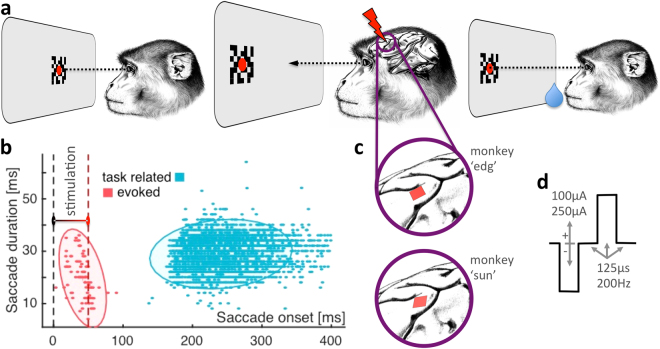Figure 1.
Experimental paradigm. Monkeys performed a visually guided center-out saccade task while the lateral prefrontal cortex was electrically stimulated. (a) Each trial was initiated when the animals foveated a central fixation point. After 800 ms, the fixation point jumped left- or rightwards along the horizontal meridian (±7 deg), and the monkeys had to make a saccade to the target location to receive a liquid reward. (b) Saccades observed fell into two categories: saccades initiated >100 ms relative to fixation point jump were considered task related (cyan) and saccades initiated between 0–100 ms were classified as directly evoked by the stimulation (red). Ellipses indicate 95% confidence boundaries for saccade parameters. (c) Electrical stimulation was delivered through 96-channel Utah arrays (red shaded areas), implanted in each monkeys left area 8Av. (d) We stimulated single electrodes blockwise on 50% of all trials. In stimulation trials, 10 biphasic pulses with a frequency of 200 Hz were delivered, with a current of either 100 or 250 μA. (a/c) Drawings by: Klaus Lamberty, Deutsches Primatenzentrum GmbH.

